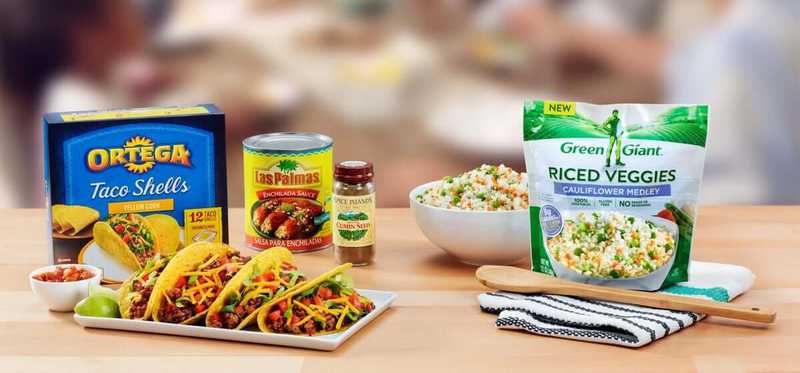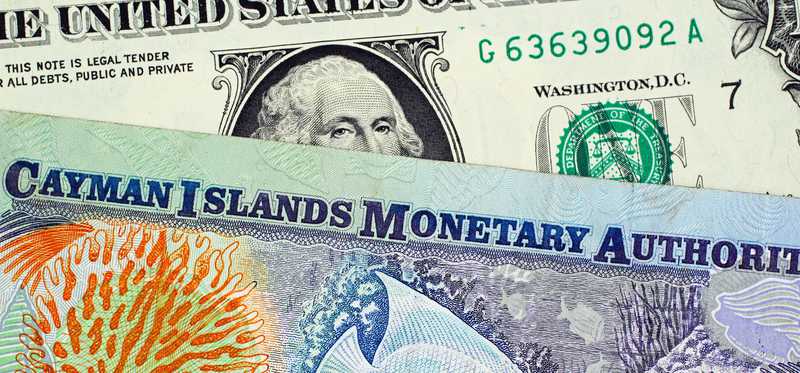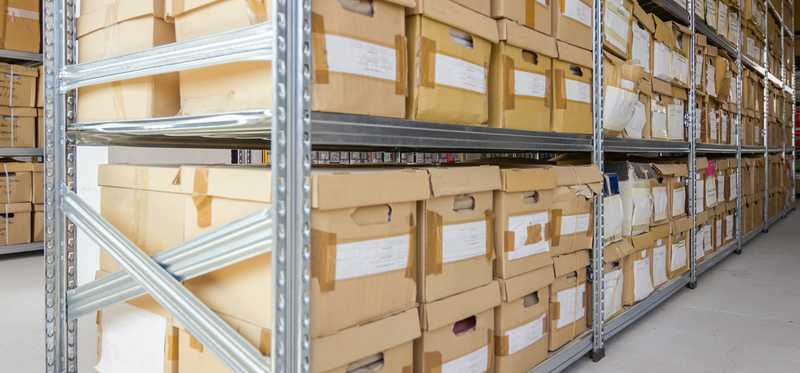These 10 Dividend Stocks Seem Too Good to Be True -- but They're Not

These 10 Dividend Stocks Seem Too Good to Be True -- but They're Not
Finding deep value in dividend stocks
Whether it’s a source of income, long-term growth of your portfolio, or building up a future source of cash flows, dividend stocks are an excellent way to build wealth. Moreover, sometimes the market puts too much stock in the downside risks a company faces, creating an opportunity for investors to pay bargain prices and profit from both the dividend yield and from the market’s eventual realization that it was underpricing a great business.
Case in point: These 10 dividend stocks aren’t perfect, and Mr. Market has punished them recently. Yet their cash flows and business prospects are more than sufficient to keep the dividend checks coming (and in some cases growing), something sellers seem to have ignored on their way out the door. For savvy investors willing to take a stake amidst some turmoil, the long-term rewards should more than pay off. Collecting a big dividend every quarter can make the ride a little more comfortable, too.
Previous
Next

1. CenturyLunk: The hardest decision has already been made
CenturyLink Inc (NYSE:CTL) has the dubious honor of making this list, despite having recently slashed its dividend by more than half in February. The thing that makes CenturyLink so compelling now is that, simply put, it didn’t need to cut its payout, but it was a move that will almost certainly strengthen the company.
Prior to cutting the dividend, CenturyLink paid out about 60% of its cash flows to cover the dividend, giving it a pretty wide margin of safety at the higher payout. With the dividend even lower, it will now be able to use more of its cash flows to pay down debt, an action which will even further free up cash flows by lowering interest expenses.
Yet investors have seemingly given up on the company: Since announcing the dividend cut and go-forward capital allocation plans, the share price has fallen another 30%, pushing the forward yield above 9.5% at recent prices.
Previous
Next

2. Pattern Energy Group: Strong tailwinds
Pattern Energy Group (NASDAQ:PEGI) is an independent producer of renewable power, primarily from wind and solar farms it owns or has a stake in and operates. It also had a solid track record of dividend growth for the first four years of its existence as a public company:

PEGI Dividend data by YCharts.
However, things came to a bit of a head in 2017, when the dividend’s growth caught up to its cash flows, and management had to halt the payout increases. For most of 2018, things were a little bit touch-and-go: Even after freezing the payout, Pattern finished the year paying out essentially all of its cash flows in dividends, and for much of that period investors sold out of the company heavily. Even after recovering some of the losses, shares are still down almost 20% from the all-time high.
But the company’s plan to reignite cash flows growth is paying off. Cash available for distribution increased 23% per share in the first quarter, putting the company ahead of its two-year plan to generate 20% more cash than it needs to cover the payout.
With a dividend approaching 8%, Mr. Market obviously isn’t convinced just yet; or more likely, investors simply haven’t realized how quickly cash flows are growing and that the dividend is far more secure than it was even one year ago.
Previous
Next

3. B&G Foods: A recession-resistant business on the mend
The first red flag investors should note about B&G Foods (NYSE:BGS) is that the company paid out a lot more in dividends per share than it earned last quarter: It earned $0.26 per share, but paid out $0.475 per share in dividends. Even when adjusting for some one-off items (mostly related to divestitures, acquisitions, and integration expenses) the company’s earnings of $0.44 per share fell short of the payout.
That’s a big reason why the yield is more than 8.5% at recent prices: Investors have sold B&G’s stock heavily this year -- it’s down 28% -- on expectations that the payout is inevitably going to be cut.
Not so fast. B&G Foods does have some warts, and after selling off some parts of its business, revenue has shrunk and profits are getting squeezed. But its cash flows -- remember that earnings aren’t all cash -- have remained relatively strong. At $50.3 million in Q1, it was sufficient enough to support the payout and management’s other initiatives, including share buybacks, debt reduction, and strategic acquisitions.
Lastly, this is a business that’s built for most any economic condition. People tend to buy more packaged foods and eat out less during weak economic periods, and as the owner of Green Giant, Ortega, Baker’s Joy, and more than three dozen other popular brands, B&G’s turnaround isn’t likely to be derailed, no matter the economic environment.
It is a little higher up the risk side of the risk-reward profile, as it has had to pay out most of its cash flows to maintain the dividend in recent years. But so long as cash flows continue improving, today’s price could look like a real bargain in a few years’ time.
Previous
Next

4. Bank of N.T. Butterfield & Son: This leading offshore bank is dirt-cheap
Bank of N.T. Butterfield & Son Ltd (NYSE:NTB) is based in Bermuda and has offices in most of the world’s biggest offshore financial services centers.
It also generates some of the strongest returns you’ll see in banking, with 23.5% return on equity and 1.9% return on assets over the past 12 months. For context, that’s well above the benchmark goals of 10% and 1% respectively, and far-higher than JPMorgan Chase (NYSE:JPM) and Goldman Sachs (NYSE:GS), two of the best-known and best-run commercial and investment banks out there:

NTB Return on Equity (TTM) data by YCharts.
Yet with its stock price down 35% from the peak, Butterfield trades for 9.5 times trailing earnings and its dividend yield is 4.7%. While generous, it’s affordable, with a payout ratio less than 45%. Moreover management is likely to continue prioritizing the payout; it was just increased 16% earlier this year.
A high-quality and highly-profitable bank trading for a single-digit earnings valuation and paying an above-average yield? Take it to the bank.
Previous
Next

5. Phillips 66 Partners: This high-yield stock is no pipe dream
Master limited partnership Phillips 66 Partners (NYSE:PSXP) is a yield machine. Based on the most-recent quarterly dividend of $0.845 per share, investors who buy at recent prices can expect to earn a fat 7% yield if the midstream oil and gas asset operator can simply maintain the payout.
Here’s the thing: Phillips 66 Partners has an amazing track record of growing the dividend; it’s been raised 21 consecutive quarters and is now 400% higher than it was about five years ago.
That’s because Phillips 66 Partners has a special relationship with none other than Phillips 66 (NYSE:PSX), its sponsor and controlling investor. In short, Phillips 66 utilizes the partnership as a “drop-down” entity, selling the pipeline assets it develops to Phillips 66 Partners. The benefit for Phillips 66 is that, as both a limited partner (MLP-speak for shareholder) and the general partner calling the shots, it collects a portion of the distributions, while moving these assets -- more specifically the debt it uses to finance them -- off of its own balance sheet.
Don’t let the fact that Phillips 66 Partners’ share price is down 11% from the 52-week high and 39% below the all-time high fool you: This is a well-run business that’s built to pay distributions, raise the payout on a regular basis, and reward long-term investors with the patience to buy and hold.Previous
Next

6. Enterprise Products Partners: A dependable income stock with a pipeline of growth
Another master limited partnership, Enterprise Products Partners (NYSE:EPD), makes our list, but it’s a different animal. Unlike Phillips 66 Partners, Enterprise Products doesn’t have an integrated oil giant pulling the strings and supplying it with a pipeline of assets to take over; but with a market capitalization of $61.4 billion, it’s 60% bigger than Phillips 66 and a true behemoth of the energy world in its own right.
It’s also one of the most-important providers of logistics for the North American oil and gas industry, gathering, processing, pipelining, and storing natural gas, crude oil, natural gas liquids, as well as operating multiple import/export terminals.
Moreover, the bulk of its revenue comes from fixed-rate contracts, typically under very long-terms, which protects its cash flows -- and its distributions to investors -- from the whims of the oil and gas market. And that’s allowed it to raise the payout almost every year since the first quarterly payment was made two decades ago.
And at recent prices, you could buy this cash-cow business for barely 10 times cash flows, and enjoy a 6.2% yield at the current dividend rate. With $10 billion in growth projects on its radar and a solid track record of performance, investors can expect the payout to continue growing for years to come, making today’s price an absolute bargain.Previous
Next

7. BP: The super-yielding supermajor
BP (NYSE:BP) has spent most of the past decade as the most-overlooked of the so-called “supermajors,” the biggest of the integrated oil and gas giants, including ExxonMobil (NYSE:XOM) and Royal Dutch Shell (NYSE:RDS-A)(NYSE:RDS-B) amongst others.
And it’s not for no reason; BP was involved in one of the biggest disasters in oil industry history, the 2010 Deepwater Horizon explosion in the Gulf of Mexico that spilled millions of barrels of oil into the Gulf and caused billions of dollars in environmental and economic damage, a big portion of which BP has paid for.
Today, BP is a much-improved business with a strong safety record and more diversified cash flows. Over the past six months, BP has generated over $12 billion in operating cash flow, in part from higher production but in no small part due to steadily improving expenses.
Moreover, BP has a handful of high-return offshore projects in the works, and hasn’t yet fully tapped into last year’s huge shale investment onshore.
But Mr. Market continues to price BP like the least of the supermajors; despite its impressive cash flows, investors have been slow to show favor to the company, and its dividend yield is near 6% at recent prices.
To some extent it makes sense, considering BP has paid out more than 100% of earnings in dividends as recently as early 2018. But with steadily strengthening cash flows, improving expenses, and several catalysts that should support further cash flow improvement in the years to come, BP is the supermajor dividend investors should be considering right now.
Previous
Next

8. Tanger Factory Outlets: A bargain-hunter’s delight
On the surface, Tanger Factory Outlet Centers (NYSE:SKT) might strike investors as a yield trap waiting to spring. After all, this real estate investment trust -- or REIT -- makes a living by renting space to retailers and with e-commerce rapidly growing and taking a bite out of traditional brick-and-mortar’s pie, who wants to be in that dying business?
Not so fast. Tanger isn’t in the business of owning regional malls or strip malls that have become all-too-familiar because of the number of vacant units. Instead, the company’s focus is in the segment of retail which still remains quite robust: Discount brand-name shopping.
As a matter of fact, Tanger reported its assets continue to be quite productive for tenants. In the first quarter, its tenants averaged $391 in sales per square foot, that’s up from $380 in 2017 and well on the way to the 2015 peak of $395 as the company focused its efforts on its best properties, having divested many of its weaker units over the past couple of years.
Tanger isn’t without its challenges. Occupancy rates are expected to be below 95% this year, down from 99% in 2012; but that’s far-better than most mall REITs can claim, and inline with occupancy rates at well-regarded competitor Simon Property Group (NYSE:SPG).
But the market’s perception that Tanger is set to struggle, continues to weigh on the share price, and that’s pushed the dividend yield above 8% at recent prices, despite the fact that it takes less than 60% of funds from operations to support. Yes, Tanger does have work to do to continue strengthening its properties and cash flows, but investors with a stomach for volatility and a willingness to ride out the ups-and-downs should give Tanger a closer look.Previous
Next

9. Hospitality Properties Trust: A counterintuitive move to boost cash flow
Investors didn’t react very favorably to Hospitality Properties Trust’s (NYSE:HPT) recent $2.4 billion deal to buy almost 775 retail properties from Spirit MTA REIT (NYSE:SMTA). Considering the prior comments about Tanger and ongoing fears that traditional retail is in decline, it’s somewhat understandable. Add in the fact that Hospitality Properties is still in the midst of spending a few hundred million bucks to renovate many of its existing hotels, and you can further see why the market wasn’t crazy about the move. Lastly, Hospitality Properties isn’t currently even in the net-lease retail business; so there are legitimate concerns that management is dragging the company away from what it’s good at.
But there’s a strong counter-argument that this move is a smart investment, and it will strengthen the company and improve its cash flows. Management projects that it will add more than $100 million in adjusted EBITDAre (excludes gains from sale and purchase of real estate) once it closes the acquisition and completes about $800 million in asset sales. Moreover, adding substantial net-lease properties to its portfolio should help smooth out the cyclical nature of its hotel business, which will shrink from over 70% of its cash flows to less than 60% post-acquisition.
There’s certainly some execution risk; it’s not uncommon for companies to promise a high figure for divestitures only to come up short, so we have to take HPT’s management at its word on this. Furthermore, the transaction won’t close until later in 2019, and it could take more than a year to complete all the related asset sales, so it’s not likely to be a quick process.
But the market’s recent reaction has priced in a lot of the risk, pushing the yield to nearly 8.8% at recent prices. On balance, this deal strengthens my conviction that it’s the best real estate investment for 2019.Previous
Next

10. Iron Mountain: Moving the mountain
Iron Mountain’s (NYSE:IRM) core business is storing paper documents, something that seems nearly as outdated as being in the TV antenna installation business. Considering that nearly two-thirds of its revenue comes from renting physical storage space to companies, it shouldn’t be very surprising to investors that it’s stock price is essentially the same today as it was five years ago (it’s up a modest 2%) and down 24% from the late-2017 peak.
However, investors would be making a mistake to dismiss Iron Mountain as a relic of the physical document past so quickly. The physical storage business remains a solid cash-cow operation, and even if its best days are in the past, it will continue to remain important and necessary for many years to come. Moreover, demand for physical storage is likely to remain strong and even grow in emerging markets like India.
But what really makes Iron Mountain a worthy dividend investment is management’s steps to make it a data storage leader for the 21st century and beyond. Less than 20% of revenue came from its “growth opportunities” segment in 2018, but that number is expected to reach 30% by 2020. The biggest driver will be digital storage: Iron Mountain already calls half of the 10-biggest cloud companies customers for data storage.
Over the next decade, cloud-based storage is set for exponential growth. Iron Mountain is set to be a big winner from this, even as its legacy physical storage business continues to play an important role supporting businesses and generating cash.
With a yield above 7.6% at recent prices and a clear role in the present and future of document and data storage, Iron Mountain is a dividend stock you shouldn’t overlook.
Jason Hall owns shares of Bank of N.T. Butterfield & Son, CenturyLink, Hospitality Properties Trust, Pattern Energy Group, and Tanger Factory Outlet Centers and has the following options: long January 2020 $17 calls on CenturyLink. The Motley Fool owns shares of Bank of N.T. Butterfield & Son. The Motley Fool recommends Enterprise Products Partners and Tanger Factory Outlet Centers. The Motley Fool has a disclosure policy.
Previous
Next
Invest Smarter with The Motley Fool
Join Over Half a Million Premium Members Receiving…
- New Stock Picks Each Month
- Detailed Analysis of Companies
- Model Portfolios
- Live Streaming During Market Hours
- And Much More
READ MORE
HOW THE MOTLEY FOOL CAN HELP YOU
-
Premium Investing Guidance
Market beating stocks from our award-winning service
-
The Daily Upside Newsletter
Investment news and high-quality insights delivered straight to your inbox
-
Get Started Investing
You can do it. Successful investing in just a few steps
-
Win at Retirement
Secrets and strategies for the post-work life you want.
-
Find a Broker
Find the right brokerage account for you.
-
Listen to our Podcasts
Hear our experts take on stocks, the market, and how to invest.
Premium Investing Services
Invest better with The Motley Fool. Get stock recommendations, portfolio guidance, and more from The Motley Fool's premium services.